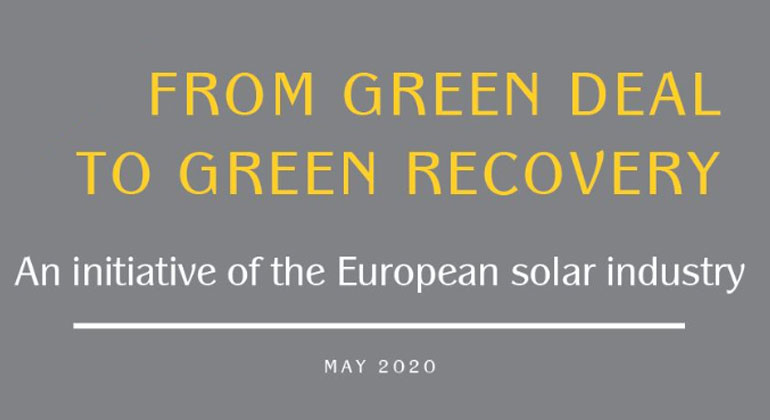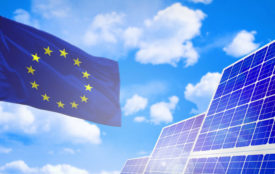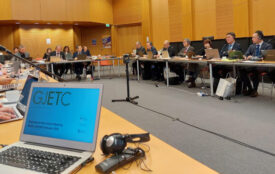FROM GREEN DEAL TO GREEN RECOVERY: A joint initiative of the EU solar industry
In early 2020, the proposal of the European Commission to launch a “Green Deal” set an ambitious double objective for the sake of European citizens’ wealth and health : increasing the European contribution to fight climate change while boosting the European economy.
Within a few months, the COVID-19 crisis added a dramatic level of urgency to act – beyond single national interests. What is needed is no longer a “boost”, but an unprecedented cooperation to “recover” the severely hit European economy under the unchanged or even increasing threat of climate change. European leaders are called to act and transform this urgency into an opportunity, without delay. This is also what the European Solar Industry is committed to.
In this context, the role of the European Solar Industry remains primarily to support the fight against climate change. It brings immediately available solutions to decarbonise energy systems while opening wide business opportunities and creating sustainable jobs – which are at the heart of a Green Recovery for the European continent.
The decarbonisation challenge applies to three sectors: electricity, heating and cooling and transport. Electricity appears today as the relatively easier-to-reach target, while heat and even more transport, are facing complex challenges and will need more time and effort. However, a smart integration of Concentrated Solar Thermal Technologies (CST) in energy policies will result in innovative multi-technologies solutions impacting not just one, but the three above-mentioned sectors.
One solar industry for Europe
The times of industries competing for the deployment of single technologies is over. Solar PV and wind hold and will keep the larger share of installed capacity. The least cost substitution of fossil-based energies comes usually first when countries go through the initial first phase of their energy transition. Unfortunately, this shifted key know-how and essential industrial production capacities of components to non-EU competitors. This should not happen again. A smart integration of the best blend of European technologies will avoid this technological drain and provide sustainable solutions, i.e. adapted to real needs – at real costs.
Therefore, the European “solar industry” can no longer be addressed only as the PV sector, discarding the considerable assets of CST. Today, markets and regulations frame a competition between companies and economies, not between technologies. Presenting the “solar industry” as reduced to PV does not reflect the business reality: not only large corporations, but also many SMEs and research entities in many European countries are working in parallel on sustainable answers using solar technologies. This demonstrates that CST is not a competitor, but a driver for the further deployment of solar electricity generation in and outside Europe proving its competitiveness versus CCGT and even more, versus coal.
- Read more
- Sehen Sie vollständige Erklärung in PDF








